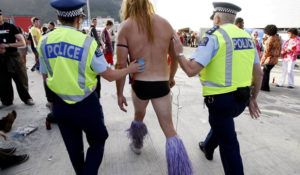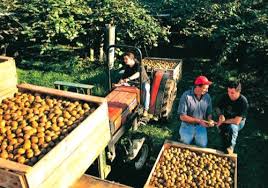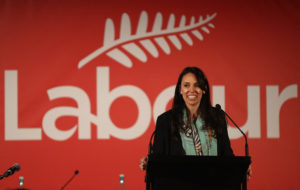
Some Kiwis might have woken up from a New Year’s-induced stupor long enough to ask: “What happened to the Wellington Sevens?” Well, sit down, folks – I’ve got a bitter and tragic tale to tell.
The short of it, though, is this – New Zealand is full of wowsers, and those wowsers saw Kiwis having a good time and decided that this had to be stomped down as soon as possible, lest anyone get carried away.
The linked article notes that the occasion was essentially “a two day party with a bit of sevens rugby on the side” and it died because “the organisers have slowly strangled the event with tighter and tighter regulations as the years went by.”
Amazingly, putting several tens of thousands of drunks in a confined space in the middle of summer didn’t end without problems.
But, as this essay will argue, so what?
14 years of what had grown to become the single greatest annual festival in the Kiwi cultural calendar, was destroyed by the Fun Police in a couple of years: “the wowsers have killed off the atmosphere that made the Wellington Sevens so popular.”
This year, an event that used to sell out a 30,000+ seat stadium in minutes has struggled to sell so much as 1,300 tickets. The general attitude towards the event from once-loyal partygoers is that “they can’t have fun at the event in case they upset someone.”
The question is: why do we let them do this to us?
So what if a few drunks caused trouble and created a sub-optimally family-friendly atmosphere. So what? Do we live in a McDonald’s playground?
It’s time to stop the rout! Everyone who enjoys drinking alcohol has to face up to this fact – cannabis is already illegal and tobacco is being made illegal. What’s going to stop the control freaks from cracking down on alcohol once they’ve banned tobacco?
And will Kiwis do anything it when it happens, or just take it up the arse as we have done thus far?
Is it acceptable that it is gradually becoming illegal to have fun? Are we doomed to end up like the Soviet Union, streets full of dour, grey-faced citizens conditioned to be afraid to crack a joke or a smile, lest they fall foul of some bureaucratic juggernaut that comes after them like a pitbull?
New Zealand has to face the very real possibility that, as our population continues to age, we will eventually ban every possible avenue of enjoyment and turn the whole country into a giant old folks’ home.
Pissheads and potheads, its time to acknowledge that we have a mutual enemy that is only growing in power as the population ages and our politicians become ever more out of touch with reality.
This enemy has existed all throughout history, and it waxes and wanes in strength according to the fashions of the age. It’s an enemy that resents all fun, resents all happiness, and which resents life itself.
The New Zealand Wowser is the single greatest threat to our quality of life. If we do not begin to oppose them, we will wake up one morning to find that everything is illegal except for a curated, Health and Safety-approved set of behaviours on a short list.



